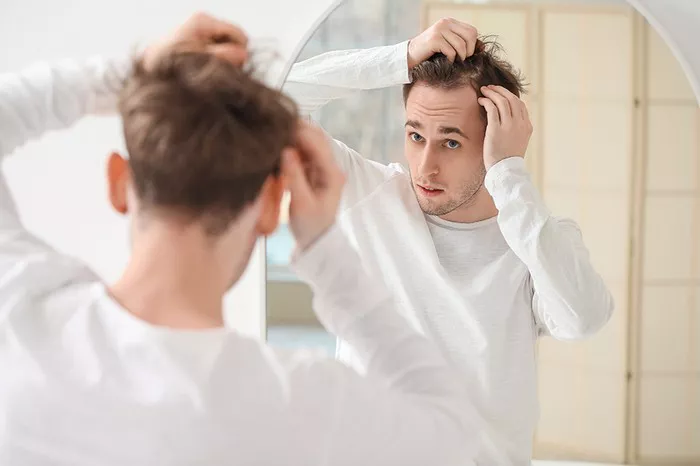Bleaching hair has long been a popular method for achieving lighter, brighter locks. However, the process of bleaching can be harsh on the hair and scalp, raising concerns about its potential side effects. One of the most pressing questions is whether bleaching hair can cause a receding hairline. In this article, we will explore the relationship between hair bleaching and hair loss, discuss the mechanisms involved, and provide expert advice on how to minimize the risks and maintain a healthy head of hair.
Understanding the Bleaching Process
Bleaching hair involves the use of chemicals, typically hydrogen peroxide and ammonia, to break down the natural pigments in the hair shaft. This process lifts the cuticle, the outer protective layer of the hair, allowing the bleach to penetrate and lighten the hair color. While bleaching can achieve dramatic results, it can also be quite damaging to the hair and scalp if not done correctly.
The Impact of Bleaching on Hair Health
Hair Structure Damage
Bleaching weakens the hair structure by breaking down the disulfide bonds that hold the hair together. This can lead to dryness, brittleness, and increased breakage. Over time, repeated bleaching can cause significant damage to the hair, making it more susceptible to splitting and falling out.
Scalp Irritation
The chemicals used in bleaching can irritate the scalp, causing redness, itching, and inflammation. Prolonged or frequent exposure to these chemicals can lead to chronic scalp conditions, which may contribute to hair thinning and loss.
Chemical Burn
In some cases, improper application or leaving the bleach on for too long can result in a chemical burn on the scalp. This can cause severe damage to the hair follicles, potentially leading to permanent hair loss in the affected areas.
The Connection Between Bleaching and Receding Hairline
While bleaching itself does not directly cause a receding hairline, it can exacerbate existing hair loss conditions and contribute to hair thinning around the hairline. Here are some ways in which bleaching can indirectly lead to a receding hairline:
Weakened Hair Follicles
Repeated bleaching can weaken the hair follicles, making them more vulnerable to environmental stressors and genetic factors that contribute to hair loss. This can accelerate the natural process of hair thinning and recession.
Increased Breakage
As mentioned earlier, bleaching can cause hair to become brittle and prone to breakage. If the hair around the hairline is already thin or weak, excessive breakage can make it appear more sparse, contributing to the appearance of a receding hairline.
Scalp Damage
Chronic scalp irritation and inflammation caused by frequent bleaching can disrupt the normal hair growth cycle. This can lead to temporary or even permanent hair loss in the affected areas, including the hairline.
Genetic and Environmental Factors
It’s important to note that hair loss and a receding hairline are often influenced by a combination of genetic and environmental factors. Conditions such as male pattern baldness (androgenetic alopecia) and female pattern hair loss are primarily genetic and can be exacerbated by hormonal changes, stress, and poor nutrition. While bleaching can worsen these conditions, it is not the sole cause.
How to Minimize the Risks of Bleaching
If you’re considering bleaching your hair, there are several steps you can take to minimize the risks and protect your hair and scalp:
Choose a Professional
A skilled hair stylist can perform the bleaching process safely and effectively, minimizing the risk of damage. They can also recommend the best products and techniques for your specific hair type and concerns.
Use High-Quality Products
Opt for high-quality, salon-grade bleaching products that are less likely to cause severe damage. Avoid using cheap, over-the-counter products that may contain harsh chemicals.
Follow Proper Application Techniques
Read and follow the instructions carefully when applying bleach. Do not leave the bleach on for longer than recommended, and rinse thoroughly to remove all residue.
Condition and Moisturize
After bleaching, use a deep conditioning treatment to restore moisture and strength to your hair. Regular use of hydrating shampoos and conditioners can help prevent dryness and breakage.
Protect Your Scalp
Apply a protective barrier, such as petroleum jelly, around your hairline and on your scalp before bleaching to prevent chemical burns and irritation.
Limit Frequency
Avoid bleaching your hair too frequently. Allow at least 6-8 weeks between treatments to give your hair and scalp time to recover.
Maintain a Healthy Lifestyle
Eat a balanced diet rich in vitamins and minerals, stay hydrated, and manage stress levels to support overall hair health. These factors can help mitigate the negative effects of bleaching and promote healthy hair growth.
When to Seek Professional Help
If you notice significant hair thinning or a receding hairline after bleaching, it’s important to consult a dermatologist or trichologist. They can assess the underlying causes and recommend appropriate treatments, such as topical medications, supplements, or hair restoration procedures.
Conclusion
While bleaching hair can achieve stunning results, it is not without risks. The process can weaken hair, irritate the scalp, and contribute to hair thinning and loss. However, by taking the necessary precautions and maintaining a healthy hair care routine, you can minimize the risks and enjoy lighter, brighter hair without compromising your hairline. Remember, the key to beautiful, healthy hair is balance and care.
Related topic:


